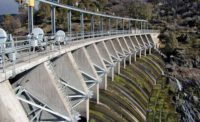Environmental Protection Agency water quality rules are contradictory and have the effect of allowing municipal dischargers in Montana an “escape clause” from compliance with state water-quality standards, ruled a U.S. federal court judge in Great Falls, Mont., on March 25.
In a lawsuit by environmental groups, Judge Brian Morris said EPA and the Montana Dept. of Environmental Quality should set a timeline for ultimate attainment of the state water-quality standard related to nutrient discharge rather than simply improving the water to a relaxed level set in a variance.
Montana in 2015 established stringent standards for phosphorus discharge and total nitrogen levels, which made it a national leader in setting numeric nutrient criteria, the ruling said. The state agency recognized that the cost to implement reverse osmosis to meet the stringent requirement was difficult for dischargers right away, so it allowed a variance, giving them up to 20 years to work toward the stiff criteria. After a three-year review, a new variance placed stronger limits on 36 municipal dischargers, but fell short of criteria in the base water-quality standard, Morris said.
The Upper Missouri Waterkeeper challenged the variance, claiming EPA and DEQ allowed dischargers the remaining 17 years to reach the relaxed criteria but did not require them to ever meet the state’s base standard, revealing “a fundamental flaw,” Morris said. In effect, the variance is replacing Montana’s base standard, he said.
Morris blamed EPA for the flaw. EPA regulations contradict themselves and the purposes of the federal Clean Water Act by establishing time to achieve “merely the highest attainable condition,” rather than the “highest condition” of water-quality standard criteria, the ruling said. “All the talk about slowly making progress is, as the court recognized, empty posturing,” said Waterkeeper on its website.





Post a comment to this article
Report Abusive Comment